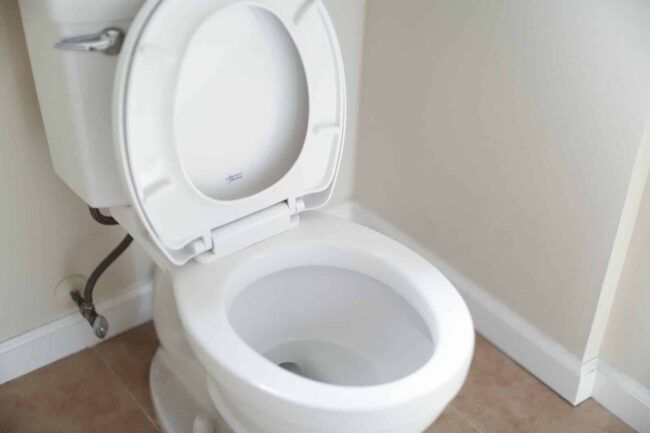You’ve encountered it—the dreaded clogged toilet. And your first thought might be to reach for a bottle of Drano. After all, Drano has been a staple for unclogging drains since time immemorial. However, using Drano in your toilet is actually a big no-no. Why? Read on to learn about the potential harm it can cause to your plumbing, your toilet, and even your health, as well as better alternatives to solve your toilet troubles effectively and safely.
The Underlying Risks of Using Drano in the Toilet
Damages Plumbing Systems
Most of us might think that Drano could simply dissolve any obstruction and flow past it, but the reality is far different. When Drano encounters a clog in your toilet, the chemical sits atop the blockage and triggers a heat-generating reaction. Over time, this heat could erode metal pipes and soften PVC pipes, posing a significant risk to your home’s plumbing infrastructure. This isn’t just a minor inconvenience; it’s a potentially costly issue that could require an entire overhaul of your plumbing system.

Jeopardizes Your Toilet’s Integrity
Your toilet’s S-trap is made of the same porcelain material as the rest of the toilet. The heat produced by the chemical reactions of Drano can cause this porcelain to expand and potentially crack. When this happens, you’re not just looking at a simple repair—you might actually need to replace your entire toilet. And let’s not forget about the potential water damage from any resulting leaks or floods.
Health Hazards
While your immediate concern might be your plumbing, the health implications of using Drano shouldn’t be overlooked. Drano can produce toxic chloramine gases when mixed with other household cleaning agents like bleach or ammonia. Inhaling these fumes could cause eye irritation, respiratory difficulties, and other health problems. It’s a danger not just to your home but also to your well-being.
What Really Happens When Drano Goes Down the Toilet?
When you pour Drano into your toilet, it interacts with the clog through its active ingredients, which are usually caustic and bleach. The chemical reaction produces a significant amount of heat, especially dangerous in toilets because of their porcelain makeup. Your toilet has an S-shaped trap that holds water to prevent sewer gases from entering your bathroom. This trap is also susceptible to the heat generated by Drano, leading to potential cracks and damages. Essentially, you’re putting your entire toilet at risk.
Effective Alternatives for Unclogging Your Toilet
The Humble Plunger
Every household should own a plunger. It’s the go-to first-line solution for unclogging drains and toilets. Plungers are inexpensive, easy to use, and quite effective at resolving minor clogs. A few strong pumps can often dislodge most obstructions without resorting to chemicals.
The Bleach Method
If a plunger doesn’t do the trick, consider using bleach. Mix a cup of bleach with water and pour it into the toilet. Let it sit for 30 minutes before flushing with hot water. The bleach can often break down clogs, making them easier to flush away.
Toilet Auger: A Step Up
For more stubborn clogs, a toilet auger could be the answer. This tool has a long handle and a coiled end that can reach deep into the toilet to break up blockages. Twist the handle to navigate the auger’s tip through the clog and dislodge it.
Baking Soda and Vinegar: The Eco-friendly Solution
This combination works wonders for a variety of cleaning tasks, including unclogging toilets. First, pour at least one cup of baking soda into the toilet bowl, followed by a couple of cups of vinegar. Wait 30 minutes for the chemical reaction to work its magic and then flush with hot water.
Enzyme Treatments: The Patient Approach
Enzyme-based solutions are effective but slow. They gradually break down the materials causing the clog. While it might take longer, this method is environmentally friendly and less harmful to your plumbing system. Always read and follow the product’s instructions for best results.
Conclusion
Using Drano to unclog a toilet poses too many risks, from damaging your plumbing and toilet to causing health hazards. Fortunately, there are more effective and safer alternatives available. Whether it’s the tried-and-true plunger, an eco-friendly baking soda and vinegar mix, or a specialized tool like a toilet auger, you have several options that won’t put your home or health in jeopardy.

Editorial Staff
Our writers, editors, content managers, and SEO specialist. We all take part in crafting amazing articles. We spend hours ensuring that each article is based on facts, researched, and thorough. You'll never want to click the back button to look for more answers other than here!
